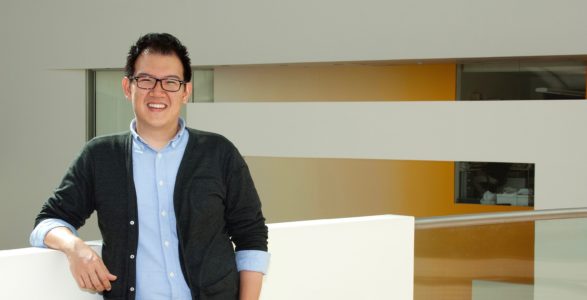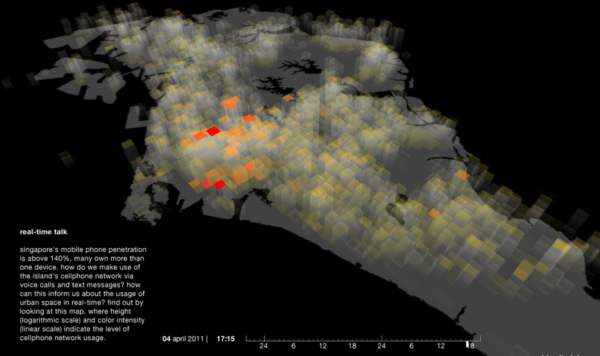The American Institute of Architecture Students (AIAS) is celebrating the 60th anniversary of student excellence in leadership, service, and design. In honor of our 60th year, the AIAS is excited to share 60th: Legacy, an ongoing weekly celebration of and thanks to our alumni sponsored by Professional Publications, Inc (PPI). PPI is a publisher of professional licensing exam materials since 1975 and wants to recognize those who have helped the AIAS achieve 60 years of success.

Name
Anthony Vanky
Organization
Massachusetts Institute of Technology (MIT)
Title
Doctoral Candidate (MIT); Partner Strategist and Research Fellow (MIT Senseable City Lab)
Connect
Twitter | Instagram | LinkedIn | Website
Bio
Anthony Vanky is a researcher and project lead at the MIT Senseable City Lab, a multidisciplinary research group at the Massachusetts Institute of Technology (MIT), where he also previously served as its principal partner and outreach strategist. The Laboratory investigates how the ubiquity of digital devices and the various telecommunication networks that augment our cities are impacting urban living. Anthony is also a Ph.D. candidate in Urban Studies and Planning at MIT whose research considers the use of digital data and pervasive sensing technologies in designing, planning and evaluating urban environments. Anthony has widely presented on topics of design, technology, and urbanism including at Harvard University, the British Government, Volkswagen AG, the Center for Strategic International Studies, the Inter-American Development Bank, among many other private and public organizations. He has published in a number academic and popular publications, including Metropolis Magazine and the American Institute of Architects. Anthony holds prior degrees from the MIT and Tulane University. Trained as an urban designer and architect, he has worked on projects across the United States, and his design work has been exhibited widely, including at the Venice Biennale, the Dutch Design Week, the Gwangju Design Biennale, and New Orleans DesCours. Anthony has also previously served in national leadership capacities on each of the five governing organization of the architecture profession in the United States, including as the National Vice President of the American Institute of Architecture Students (AIAS) in 2007-2008. Anthony also launched two non-profit youth advocacy organizations which are still active today in his hometown of Ann Arbor, Michigan.
How did your experience with AIAS help you to achieve your goals?
The single most important asset of the AIAS is its people. Now ten years since receiving my baccalaureate and professional degrees, I am still in touch with so many former AIASers. Each has taken a different route through their careers—some are licensed, others are in academia, while others are in policy, technology, and a critical mass can be identified professionally as “other”. Now, I have an impressive network who are both geographically and experientially diverse, of individuals from whom I can learn and gain advice about so many topics.
How can someone be a better designer?
Buckminster Fuller, riffing on Herbert Simon, the great systems engineer, thought that science was the description of how the world is, and that design was how the world could or ought to be. This “design science” bears with it a responsibility to imagine realities that address the ills and challenges of today. I think that, fundamentally, good design addresses these essential challenges and for a designer, it is important to understand the imperative to find and address those aspects of what the future ought to be like. I think vital to this is a sense of reflection of one’s values and one’s own design practice. In Japanese culture, there is a term “shokunin” which roughly translates to master craftsman. However, the subtlety of the word comes in that it does not apply to a state of being—it’s not about being the master—but more about the constant striving for mastery. It’s an attitude about striving for constant improvement of yourself and your work. I think “design” is open for constant improvement, but it takes time for reflection, which we often disregard in favor of moving on to next action item. I also think we must be open to exploring design, and honing our sensibilities. I think we have biases of what we find wonderful, yet we do not often reflect on why something brings us that joy—to deeply think about it and build our own repertoire in design. Of course, design as a process could also change, which poses a different set of conditions about the craft. The epochal compulsion to redefine the process and meaning of design has happened many times in the course of human industry.
What is one tip you would give yourself in your 20s?
The benefit of one’s 20s is that one is old enough to have had perspective, yet young enough to take risks. As such, I would have told myself to explore and play more. It took me a long time to learn to code—a skill I’m still quite poor at—but there were opportunities to jump in and learn on the fly that I didn’t embrace earlier because I thought I didn’t have the time for the struggle. There were many opportunity costs that came as a result. The same can be said about classes I haven’t taken, and ski trips I didn’t take (I still can’t ski!). From my own experiences, I would recommend to others to travel. And more important than seeing a landmark building is exploring the cultures of the people who inhabit the community around. Although a luxury for some, I would highly recommend experiencing cultures different from your own, even if it means traveling domestically or to another part of your city. Having grown up in California and the Midwest, going to college in New Orleans has undoubtedly expanded my worldview, and appreciate the strength that comes with diversity. If you can travel farther away to experience non-Western cultures, all the better!
How have you overcome unforeseen challenges through your career?
I believe you have to be open to opportunities that come to you. Although many career advisors recommend picturing yourself in five, ten, etc. years out, challenges do arise that may bring unanticipated opportunities. I think, for me, these opportunities have broadened my perspective of what my career can be. The prime example was the economic collapse at the end of the 2000s, where my career plan, like many other’s, was derailed. However, I was fortunate to have an opportunity to work in economic development for Ann Arbor SPARK, my hometown’s regional economic development agency. Rather than thinking of that opportunity as a tangent in my career, it offered new insights and practical experiences that now I embrace and apply in my professional activities. I’ve since worked with about eight city and regional governments around the world, and I intimately understand their perspective when collaborate opportunities arise. I understand the challenges they see in a way I would not have if I were in a traditional client-service provider relationship.
What is a decision or action you made in school that influenced your trajectory?
With a few too many academic credits already taken, in the fourth year of a five-year program, I picked up a second major in political science with the newfound time in my schedule. That coursework led me to find intersections in the political dimensions of the built environment and taught me to understand how we explain phenomena through a social science lens. The intersection between design and the social sciences most definitely makes sense, although perhaps more coincidentally than intentionally, in my own research work in the use of digital data to understand the difficult to enumerate social behaviors of people in urban spaces. Although my final semester was particularly stressful with my architectural thesis and a capstone project in PoliSci, I would redo that experience in a heartbeat.
If you, or another AIAS alumni you know, deserves recognition for their contribution to the profession and society at large, please use the link below to nominate them for this honor.











